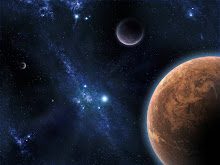There are two competing theories for the recent global warming trend.
The first is based on a theory which followed the warming trend that occurred between 1975 and 1998.
The second theory is based on highly correlated data going back thousands of years.
Most agree that the temperature has increased about 0.6 - 0.7 Centigrade over the last century and that the level of CO2 or Carbon Dioxide a greenhouse gas has been increased in the atmosphere by 25-30% from pre industrial values.
The first theory, which is the generally accepted one, is that the release of greenhouse gases from the burning of fossil fuel and from land use are responsible for the resent temperature increase.
The second theory is that the sun's magnetic field and the solar wind modulates the amount of high energy cosmic radiation that the earth receives. This in turn affects low altitude cloud cover and how much water vapor there is in the atmosphere and thus regulates the climate.
Sunday, July 27, 2008
The world's environment in danger

We now know that failing widespread measures, the impact of human activity on the global environment threatens the survival of the biosphere and future generations:
Global climatic warming largely results, according to the vast majority of scientists,from “greenhouse gas” emissions caused by human activity and modern modes of consumption, primarily those which are bound up with urbanization (thermal power plants, industrial pollution, motor traffic, etc.). The thawing of the Earth’s glaciers would lead to a veritable ecological disaster. Global warming also seems to be accompanied by greater variability and considerable regional or local disturbances. These could be the cause of radical climatic changes in some regions of the world and of a growing number of increasingly serious “natural” disasters whose precursory signs are already to be observed. It is nevertheless clear that, where control of greenhouse gas emissions is concerned, the progress made since the Rio Conference in 1992 has had a limited impact, as shown by the problems of getting the Kyoto Protocol ratified.
Water is not evenly distributed: it is abundant, it is “running”, but not everywhere and for everyone. Almost a quarter of humanity – 1.4 billion people – does not have access to clean and drinking water and over half the world’s population lacks proper sanitation. To meet the challenges will require above all policies on the judicious use of water resources so as to put an end to the excessive consumption of water in agriculture, which at present uses up worldwide close to two thirds of all the water taken from rivers, lakes, streams and underground. But behaviour patterns must also change.
The depletion of the ozone layer, protector of life on Earth, has never been so great. But there are encouraging signs: if the provisions of international protocols are complied with, the ozone layer could be completely reconstituted by 2050.
Desertification is spreading and today directly affects 250 million people and is threateningclose to one billion human beings living on arid lands in approximately 110 countries. This figure could double by 2050 if desert areas continue to expand at the present rate.
All natural environments are directly affected. While forests still cover aquarter of the planet’s land, the net loss of forest cover in the world is estimated at some 11.3 million hectares per year, even if an ever-increasing number of countries are endeavouring to manage forests more effectively and take greater account of environmental factors in this domain. The oceans are also affected: continental fishery resources, one of the main sources of food and protein for millions of people, are threatened by environmental damage and need immediate protective measures. In addition, changes in ocean currents worldwide, accelerated by human activities, are directly endangering the present dynamics of the Earth’s climate and ecosystems.
Chemical pollution and invisible pollution are on the increase. Over the past 50 years, new modes of consumption and production, primarily in agriculture-based industry, have developed and thousands of new chemical products have appeared. These chemicals are present in countless consumer and maintenance products throughout the world, in cardboard and plastic packaging, in the waters of all the oceans and in the air, and in houses, schools and work-places. They pass through the food chain and cross the barriers of the species. Some pesticides and dangerous chemicals that have been prohibited or strictly controlled in some countries can be exported to poor countries, where they give rise to frequent cases of poisoning.
Biodiversity is also likely to diminish considerably in the coming decades. Many of the species described to date are now being depleted or even dying out at a speed 1,000 to 10,000 times greater than in the major geological periods of extinction.
Subscribe to:
Comments (Atom)






